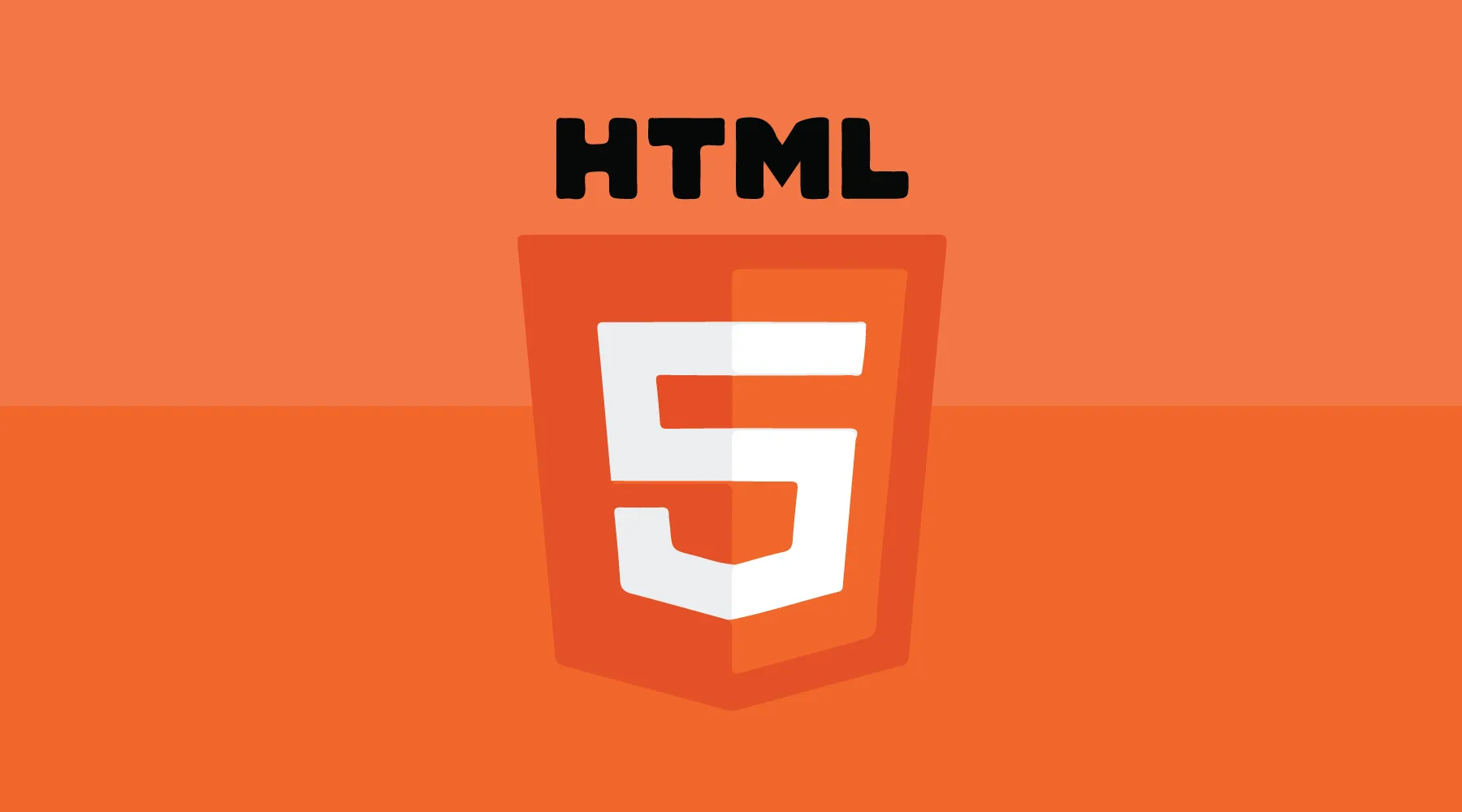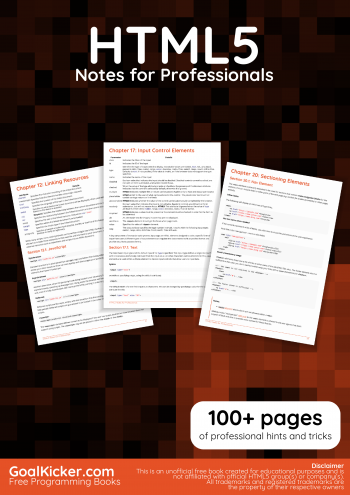Welcome to JD Academy - Unleashing the Power of Front-End Magic!
Welcome to the HTML section of JD Academy! In this module, you'll embark on a journey to master the fundamental language of the web—HTML. As the backbone of every web page, HTML allows you to structure content and create a seamless browsing experience for users.

HTML (HyperText Markup Language)
History:
-
Early Development (1989-1991): HTML was invented by Sir Tim Berners-Lee, who also created the World Wide Web. The first version of HTML, HTML 1.0, was introduced in 1991.
-
HTML 2.0 (1995): The Internet Engineering Task Force (IETF) published the HTML 2.0 specification, introducing features like forms and tables.
-
HTML 3.2 (1997): This version added support for scripting languages, applets, text flow around images, and more.
-
HTML 4.01 (1999): A major release that introduced style sheets, scripting support, and improved accessibility features.
-
XHTML (2000): HTML reformulated as an application of XML, bringing stricter syntax rules.
-
HTML5 (2014): A landmark release that added new semantic elements, audio and video support, canvas for drawing, and improved forms.
Evaluation:
Advantages:
-
Semantic Structure: HTML provides a semantic structure, making it easier for search engines and assistive technologies to understand content.
-
Compatibility: HTML is supported by all browsers, ensuring broad compatibility.
-
Evolution: The ongoing development of HTML, with the latest version being HTML5, keeps it relevant and adaptable.
Challenges:
-
Complexity: Over time, HTML has become more complex due to the addition of new features. This complexity can be a challenge for beginners.
-
Backward Compatibility: Maintaining backward compatibility with older versions can sometimes limit the adoption of new features.
1. Introduction to HTML:
HTML, the cornerstone of web development, stands for HyperText Markup Language.
It provides the structure for web content, allowing browsers to interpret and display information. Every web page starts with a solid foundation in HTML.
HTML Document Structure:
<!DOCTYPE html>
<html lang="en">
<head>
<meta charset="UTF-8">
<meta name="viewport" content="width=device-width, initial-scale=1.0">
<title>Your Page Title</title>
</head>
<body>
<!-- Your content goes here -->
<h1>Welcome to Your's JD Academy </h1>
</body>
</html>
2. HTML Elements:
Headings:
HTML consists of various elements that define the structure of a webpage. Let's delve into some essential elements:
<h1>This is a Heading 1</h1>
<h2>This is a Heading 2</h2>
<!-- ... -->
<h6>This is a Heading 6</h6>
Paragraphs:
<p>This is a paragraph of text.</p>
Lists:
<ul>
<li>Unordered List Item 1</li>
<li>Unordered List Item 2</li>
</ul>
<ol>
<li>Ordered List Item 1</li>
<li>Ordered List Item 2</li>
</ol>
3. HTML Forms:
Forms are crucial for user interaction. Let's explore form elements and their attributes:
Form Structure:
<form action="/submit_form" method="post">
<!-- Form elements go here -->
</form>
Input Types:
<input type="text" placeholder="Enter your name">
<input type="password" placeholder="Enter your password">
<input type="submit" value="Submit">
4. Hyperlinks and Navigation:
Navigation is key for a user-friendly website. Learn how to create links and navigation menus:
Linking Pages:
<a href="page.html">Go to Page</a>
Navigation Menu:
<nav>
<ul>
<li><a href="home.html">Home</a></li>
<li><a href="about.html">About</a></li>
<!-- Add more menu items as needed -->
</ul>
</nav>
5. Multimedia Integration:
Enhance your website with multimedia elements:
Image:
<img src="image.jpg" alt="Description">
Audio:
<audio controls>
<source src="audio.mp3" type="audio/mp3">
Your browser does not support the audio tag.
</audio>
Video:
<video width="320" height="240" controls>
<source src="video.mp4" type="video/mp4">
Your browser does not support the video tag.
</video>
6. Semantic HTML:
Semantic tags add meaning to your content, benefiting both developers and search engines:
Semantic Tags:
<header>
<h1>Main Heading</h1>
<p>Subtitle or tagline</p>
</header>
<article>
<h2>Article Title</h2>
<p>Article content goes here.</p>
</article>
<footer>
<p>© 2023 JD Academy. All rights reserved.</p>
</footer>
7. HTML5 Features:
HTML5 introduced exciting features for modern web development:
Geolocation:
<button onclick="getLocation()">Get Location</button>
Local Storage:
<script>
localStorage.setItem("username", "JohnDoe");
const username = localStorage.getItem("username");
</script>
YouTube Channels To learn HTML:
Channel's for HTML Videos
Error Makes Clever Academy :
Key Points:
- Tutorial on mastering HTML basics and beyond for web development in Tamil.
- Presented on EMC's YouTube channel.
- Emphasis on using VS Code for coding and opening HTML tutorials.
- Explanation of HTML as a hypertext markup language with symbols for document structure and formatting.
- Covers HTML elements like H2, H3, H4, H5, H6, and introduces CSS, Bootstrap, Angular JS, React JS.
- Practical steps include creating an event management HTML project, using tables and forms, and registering for a course with HTML elements like input, select, and submit.
Highlights:
- VS Code usage for coding and HTML tutorials.
- Explanation of HTML and introduction to CSS, Bootstrap, Angular JS, React JS.
- Creation of an event management HTML project and course registration demonstrated with practical steps.
Tutor Joe's Stanley :
Key Points:
- YouTube tutorial: Learn Complete HTML Tutorial In Tamil | தமிழ்."
- Teaches HTML in Tamil, catering to Tamil-speaking audience.
- Comprehensive coverage of HTML concepts and coding practices
Highlights:
- VS Code usage for coding and HTML tutorials.
- Tutorial likely includes comprehensive coverage of HTML concepts and coding practices.
Tamil Hacks 2.0 :
Key Points:
- Tutorial on learning HTML in Tamil for beginners on YouTube.
- Emphasis on complete guide and tutorial for building a website from scratch.
- Covers HTML basics, including tags, elements, and attributes.
Highlights:
- Demonstrates creating a simple HTML webpage with tags like head, body, title, paragraph, and more.
- Touches on CSS and mentions future tutorials on web development.
Hands-On Projects:
Build Your First Web Page:
- Create a webpage with a header, navigation menu, and content section.
Implement JavaScript to validate form inputs.
- Create a webpage with a header, navigation menu, and content section.
Interactive Multimedia Gallery:
- Build a gallery using images, audio, and video elements.
Resources:
Recommended Reading:
- MDN Web Docs: Your go-to resource for HTML documentation.
- "HTML and CSS Design and Build Websites" by Jon Duckett.
Community and Support:
- Engage with our vibrant community of learners and mentors.
- Join coding challenges and collaborative projects.

